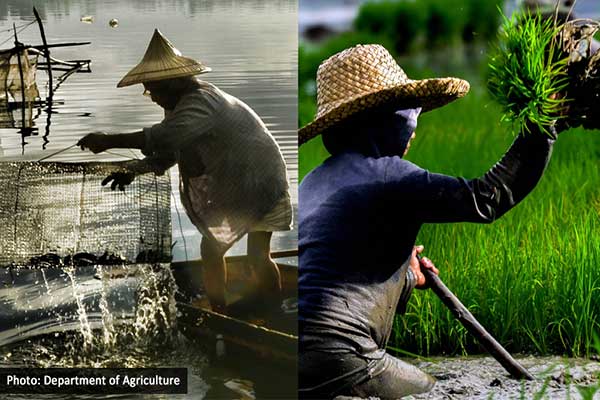
The country’s agriculture and fisheries sector has progressed since the passage of the Agriculture and Fisheries Modernization Act (AFMA). However, it is not yet modernized based on the law’s objectives.
This was shared by Roehlano Briones, senior research fellow at the Philippine Institute for Development Studies (PIDS) and author of the PIDS study on AFMA featured at a webinar recently organized by the Institute.
The AFMA or Republic Act 8435 is the country’s landmark legislation on the sustainable and equitable development of the agriculture and fisheries (AF) sector. The law defines AF modernization as “the process of transforming the agriculture and fisheries sectors into one that is dynamic, technologically advanced, and competitive, yet centered on human development guided by the sound practices of sustainability and principles of social justice”.
The study examined how far the country has progressed in AF modernization over the years.
In terms of the share of the AF sector in the country’s gross domestic product, Briones noted that it declined to 9 percent in 2019 from 19 percent in 1990 then rose slightly to 10 percent in 2020 when the COVID-19 pandemic happened. The agriculture employment share shed 22 percentage points from 1991 to 2019.
Briones also looked into the major subsectors of agriculture. Growth in crops, the biggest subsector, started strong in the 2000s but slowed down over the past two decades, hindering the overall growth of the sector.
The fisheries and livestock subsectors also suffered in the last decade. The poultry subsector, on the other hand, has been a consistent growth performer since the late 1990s.
Briones also highlighted various interventions undertaken in the sector since the passage of the AFMA.
One is introducing an area-based approach to agricultural development planning based on delineated zones. However, the failure to properly delineate the strategic agriculture and fisheries development zones hindered the pursuit of this approach.
On credit, Briones said the AFMA reinforced an ongoing market-oriented reform in the agricultural credit system. Although this resulted in a gradual shift in the source of small farmer loans from informal to formal lenders, smallholder agriculture financing remains inadequate.
“A lot of smallholder farmers remain reticent to borrow from the formal sector because of documentary requirements as well as the lenders’ unwillingness to absorb risk and their perception of the high risk of agriculture,” he explained.
The agricultural economics expert also noted that the implementation of AFMA’s marketing support provisions remains incomplete.
For instance, the Department of Agriculture (DA) is mandated to establish a National Marketing Assistance Program, with the Agribusiness Market Assistance Service (AMAS) as the lead. While the AMAS has been established, its budget has been far below what is needed to fulfill its mandate.
Given these findings, Briones provided recommendations to successfully pursue AF modernization. One is to abandon elements of traditional industrial policy inconsistent with the market approach.
Another is to terminate expenditure programs based on distortionary subsidies to give way to funding a modern industrial policy for the agri-food system.
There is also a need to apply area-based, bottom-up planning in determining strategic interventions to meet the needs of farmers and rural enterprises along the value chain.
“We must shift from a top-down and banner program-centric type of planning especially focused on rice as customary in many DA strategies and move to bottom-up planning and area-based approach as originally envisioned in the AFMA,” he said.
Finally, Briones recommended adopting a results-based monitoring approach to the Agriculture and Fisheries Modernization Plan.
“The Program Benefit Monitoring and Evaluation System is built into the law, but sadly, this was not implemented. This should now be reestablished, reenergized, taken seriously, and monitored,” he concluded.





















